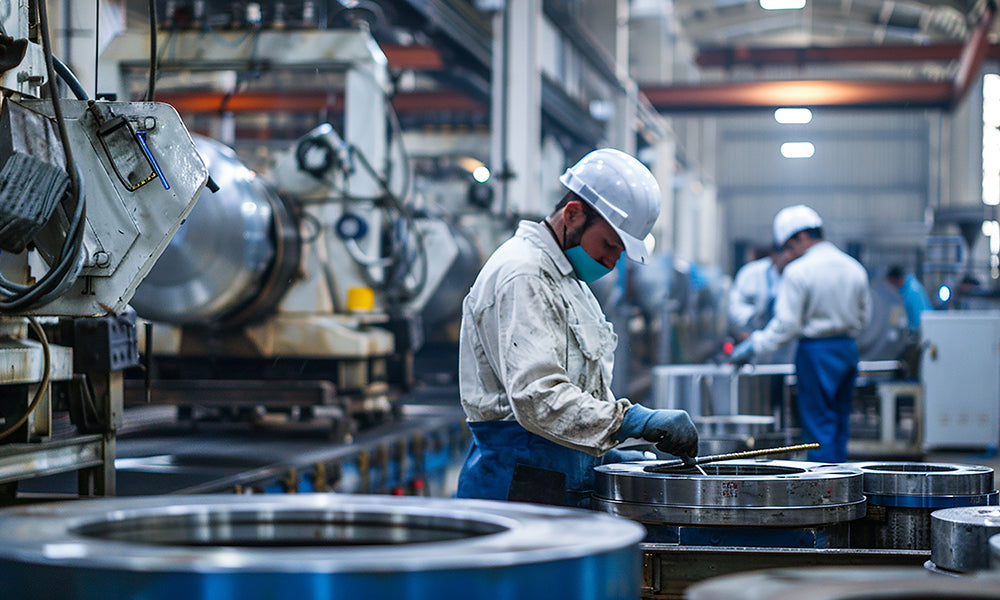Understanding the Core Drivers Behind Modern Manufacturing Processes

The world of manufacturing is constantly evolving-driven by new technologies, changing customer demands, and a tighter focus on efficiency. Yet, at the heart of every factory, no matter how high-tech or traditional, lies one constant: the need to structure and manage production effectively. Whether you're fabricating aerospace components or packaging consumer electronics, how you organize your operations determines everything from delivery timelines to profitability.
While manufacturing processes may vary by industry, they can generally be categorized into a few core types. Understanding these foundational models is critical for improving workflow, forecasting capacity, and scaling production to meet demand.
Why Process Classification Matters
Before diving into the types, it's worth asking-why bother categorizing manufacturing processes at all?
The answer lies in visibility and optimization. When you know exactly how products move through your facility-from raw materials to finished goods-you can identify delays, reduce waste, and make better investment decisions. This visibility allows teams to align their resources with production needs, create more accurate cost projections, and standardize quality control procedures.
But the real power emerges when process classification connects to broader production planning systems. For example, batch-based manufacturers often need to sync operations with downstream logistics to minimize storage costs. In contrast, continuous-flow producers must constantly balance throughput with machine maintenance windows. That kind of coordination is impossible without a clear understanding of the underlying process model.
The Big Five: Common Types of Manufacturing Processes
1. Job Shop Manufacturing
This approach is best suited for custom, low-volume production. Think of a machine shop creating prototypes or a fabrication facility building one-off parts. Equipment is usually arranged by function rather than product line, and jobs flow based on individual requirements.
The upside? Flexibility. The downside? Complexity in scheduling and longer lead times.
2. Batch Manufacturing
Batch production is a middle ground between custom work and mass production. Products are made in specific quantities before switching over to something else. It’s common in food processing, paints, pharmaceuticals, and similar industries where setups may require cleaning or recalibration between batches.
It enables economies of scale without committing to continuous runs, making it ideal for companies with moderate volume and variable demand.
3. Repetitive Manufacturing
This method involves producing the same or similar items over extended periods. Assembly lines are common in repetitive manufacturing, especially for goods like appliances, automobiles, or packaged consumer products. Processes are standardized, predictable, and optimized for high throughput.
It’s efficient, but less flexible-changes to product design or configuration can be costly and time-consuming to implement.
4. Continuous Manufacturing
Similar to repetitive, but without interruption. Think oil refineries or chemical plants, where materials are processed 24/7 in a nonstop flow. Downtime is rare and usually planned far in advance. The equipment is specialized, and the process is heavily automated to ensure consistent output.
Because the system runs non-stop, everything from maintenance to inventory control must be tightly integrated to avoid costly disruptions.
5. Discrete Manufacturing
Unlike continuous or repetitive systems, discrete manufacturing focuses on individually countable products-like cars, computers, or furniture. These operations often rely on bills of materials (BOMs), product variants, and subassembly stages. While it allows for more customization, it also introduces complexity in inventory and workflow management.
The Role of Planning in Manufacturing Efficiency
Regardless of the process type, planning is what keeps operations running smoothly. Accurate forecasts, real-time adjustments, and demand alignment are essential for minimizing downtime and meeting customer expectations.
One tool that plays a central role in this effort is master production scheduling. It acts as the bridge between long-term demand planning and day-to-day shop floor execution. A well-structured MPS ensures that production resources are used efficiently, materials are available when needed, and delivery promises can be met without overextending capacity.
The value of an MPS becomes particularly evident in environments with fluctuating demand or product variation. It can prioritize high-margin products, respond quickly to order changes, and identify potential bottlenecks before they affect delivery timelines.
Matching Process Type With Business Goals
Choosing the right manufacturing process isn’t just a technical decision-it’s a strategic one. A startup entering a niche market may benefit from the flexibility of job shop manufacturing. Meanwhile, a global brand launching a high-volume consumer product is more likely to succeed with repetitive or continuous methods.
That said, hybrid models are becoming increasingly popular. For instance, a manufacturer might use batch production for core components but assemble final products using discrete processes to accommodate customization. The key is to adapt your strategy based on product complexity, order frequency, and market dynamics.
Real-World Example: From Chaos to Control
A mid-sized electronics manufacturer was struggling with inconsistent order fulfillment. Their facility used a blend of batch and discrete processes, but lacked a unified planning framework. Orders were often delayed or expedited at the last minute, creating inventory problems and frustrated customers.
After implementing a formal master production scheduling system tailored to their mixed process environment, they saw a 40% reduction in production lead times. With clearer visibility into resource allocation, they could plan smarter, prioritize urgent orders when needed, and minimize machine idle time. Most importantly, they regained the trust of clients who depended on reliable delivery.
The Future of Process Optimization
As automation and AI continue to reshape industrial workflows, the distinction between process types is becoming less rigid. Smart factories are blending flexibility with scale-producing high-mix, low-volume orders without sacrificing efficiency.
Still, these innovations work best when built on a clear understanding of your core manufacturing approach. Even the most advanced software can't compensate for misaligned processes or a lack of visibility into capacity and demand.
That’s why manufacturers who invest in foundational planning systems-like MPS-and tailor their operations to fit their process type are better positioned to adapt, grow, and compete in an increasingly dynamic market.














